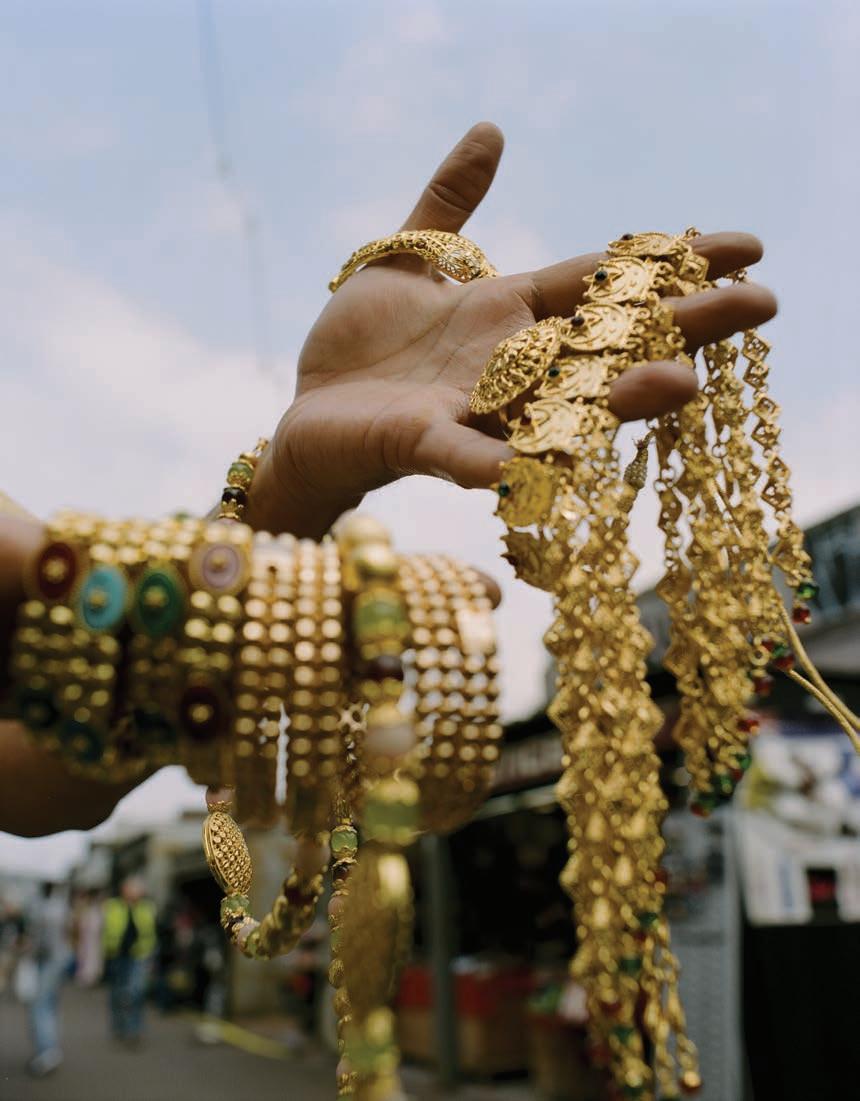








VISIT WESTFIELD SQUARE

Thank you for picking up a copy of the Bush Bugle, a new local newspaper for Shepherd’s Bush.
Putting together our second edition has taken us to all corners of the area, meeting many interesting and inspiring people, businesses and groups along the way.
Our cover star for the issue is the Delina kitchen founder, Nazareth Kelif, who will no doubt be a familiar face to any readers who, like us, are fans of her delicious Ethiopian and Eritrean cuisine.
We find out why the food she cooks and serves daily at her restaurant in Shepherd’s Bush Market means so much more to her than just work on page 8.
We also talk to the dedicated team behind the Upper Room, a longstanding local charity offering a lifeline to people who are experiencing homelessness in the area.

Bush Hall – the iconic and much-loved live music venue on Uxbridge Road – has launched a crowdfunding campaign to stave off what its owners have said will be a “hideous decision” about whether the venue will have to cease hosting live music events.
At the time of writing, the campaign had raised £39,965 of its £42,000 target thanks to more than 800 supporters, raising hopes within the local community that live music at the venue can be saved, with the crowdfunding deadline of 12 April approaching fast.
The co-owners of Bush Hall, Emma Hutchinson and Charlie Raworth,
It began when, 30 years ago, the vicar of St Saviour’s Church, John Wheeler, and his wife, Brenda, decided they wanted to help the growing number of people who were coming to the vicarage asking for food. In response, they set up a small kitchen in their garage offering free hot meals to people in need.
In the years since, the small but dedicated service has grown into a dynamic charity serving 33,000 hot meals a year. Find out more about the work it does – and how to volunteer – on page 21.
Also inside, we look back at the colourful life of Stan Bowles, the legendary former QPR footballer who sadly passed away in February, on page 10, and chat to the local film-maker Naeem Mahmood about his dystopian new film – and why Shepherd’s Bush is his studio – on page 14.
who have run the venue for 23 years, said: “The marketplace and audience perspective has dramatically changed, compounded by the cost of living crisis with declining per head spend, spiralling utility and insurance costs and the end of the fixed-rate mortgage. This leaves us with devastatingly low margins across the sector. We are now sitting in the red month on month.”
Speaking of their decision to launch a Crowdfunder appeal, Emma and Charlie said they had calculated that they are just four months away from having to potentially cease hosting live music, despite Bush Hall’s enviable track record over the past two decades. The venue has hosted a galaxy of stars, from REM, Florence and the Machine and Amy Winehouse to Paul Weller, Suede, Adele, Kings of Leon, the Killers, Nick Cave and many more.
“The lack of profitability has caused the immediate, urgent financial situation for Bush Hall,” Emma and Charlie said. “Our bank is forcing a sale to repay the termed mortgage, which they are not willing to renew. This potentially means two businesses may be affected: Bush Hall, and our non-profit music school, Music House for Children.
“Every penny we have had has been ploughed back into overheads. In April the minimum wage goes up, which only raises the burden for hospitality places and will increase our supplier costs yet again with budget increases also expected.”
If the venue succeeds in its crowdfunding campaign, the funds will be used to continue to run and promote
We’d like to say a big thank you to our talented team who made the latest issue happen, including the designer Laura Mingozzi-Marsh, photographer Julia Hawkins, features editor Luke G Williams and all our other contributors who are listed below.
We’re now starting work on the third issue of the paper, which will be the summer edition. We’d love to hear your story ideas, so please drop us a line at shepherdsbushbugle@gmail.com if there’s someone or somewhere local that you would like us to feature.
If you run a business or organisation and are interested in advertising with us, please do also get in touch. As you can see from this edition, you’ll be in great company.
We hope you enjoy the issue!
Mark McGinlay and Kate White
Bush Hall’s music programme, as well as to fund urgent repairs, pay leasehold rent and contribute towards the venue’s marketing and publicity budget.
Originally built as an Edwardian dancehall in 1904, Bush Hall has had several incarnations in its 120-year history – including a soup kitchen during World War Two. In the 1950s and 60s it was used as a rehearsal space, with the likes of Cliff Richard, Adam Faith and the Who said to have practised there.
Later repurposed as a bingo hall and then a social and snooker club, Bush Hall was bought by Charlie and Emma in 2001. The duo returned the venue to its musical roots, restoring and uncovering some of its original features, such as previously hidden decorative cherubs, and replacing six chandeliers.
As well as hosting live music, the venue is in regular use for comedy and cabaret nights, wedding receptions and myriad other events.
The economic difficulties Bush Hall is experiencing are indicative of the issues facing many independent and grassroots music venues across the UK.
According to the charity the Music Venue Trust, grassroots music venues closed at the alarming rate of two per week in 2023 and, when taking expenditure and income related solely to live music into account, made an average loss of £137,500.
Commenting on the national crisis afflicting these venues, the trust’s founder and CEO, Mark Davyd, said: “This is a disaster: 16% of the grassroots music venues in this country closed in the last 12 months. It’s just not good enough.”
Ceramic Art London is celebrating its 20th anniversary this year with a three-day fair just a 15-minute walk from Shepherd’s Bush tube station.
The fair will showcase 118 ceramicists and a vast array of diverse and contemporary works, with prices ranging from less than £100 to £10,000 for museum-quality pieces.
Makers at the fair, which is organised by the Craft Potters Association, hail from all over the world, from Greece and Guatemala to Korea and Japan. An events programme with a host of interesting speakers and a hands-on display will also form part of the showcase, which will be held at Olympia for the first time in its history.
The association’s Toby Brundin said: “This will be our largest ever fair and the
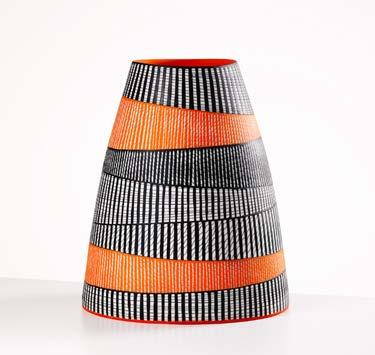
new venue will allow us to increase the content and visitor experience as well as include more makers. Out of the 118 makers, over a third will be new to the 2024 edition, keeping the fair fresh and exciting.”
Those taking part this year include Louise Bell, whose ceramic “ancient toys” are inspired by the universal appeal of toys. With sources dating back to 1600BC, her works are unique, hand-built sculptures with multi-layered meanings.
Bell said: “I am concerned with the preservation of childhood objects, their longevity and the value of iconic toys that have evolved through centuries and across continents and yet have changed so little in shape and purpose.
“These toys, which evoke human emotion and make personal connections through


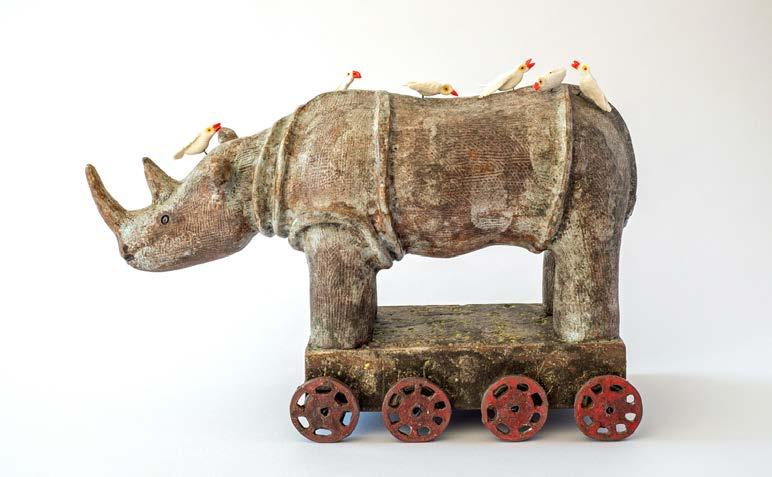
interaction and play, should be celebrated, particularly in today’s consumerist, throwaway culture.”
Bryony Applegate’s practice revolves around designing and making functional ceramic objects, blurring the boundaries between sculpture and utility. Her works include lighting and tableware.
Exhibiting alongside them will be the Turkish artist Omer Oner, who takes discarded objects such as door handles, scrap wood, plastic, glass and fragments of metal furniture and replicates them through highly crafted ceramic forms.
The programme of talks will include a discussion of ceramics and architecture,

which will explore the relationship between ceramics and cities. Another talk will examine the emergence of a network of independent, community-driven clay studios and their futures.
In addition, a panel discussion, titled Crafting Identities: Sharing Stories with Clay, will explore how ceramicists use clay to express heritage and culture. Looking at the diverse stories and issues in ceramic art, it will foster a deeper understanding of clay’s role in cultural identity.
The fair runs from 19-21 April at Olympia West, Blythe Road. Tickets are on sale via tickettailor.com





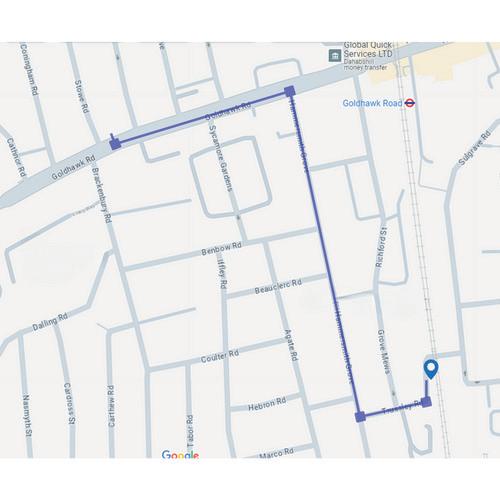





Lady Dealer, the Edinburgh fringe hit play by Martha Watson Allpress, makes its London debut in a limited season at Bush Theatre from 15 May.
Watson Allpress’s first play, Patricia Gets Ready (for a Date With the Man That Used to Hit Her), received five-star reviews, with the Guardian describing it as “bold and brilliant”. Her second play, Kick, won the Bill Cashmore Award and was staged for a limited run at the Lyric Hammersmith.
Last year her newest work, Lady Dealer, premiered to critical acclaim in Paines Plough’s Roundabout theatre. The same year, Watson Allpress was announced as the winner of the Ambassador Theatre Group’s Playwrights Prize for her script Ask Her if She Still Keeps All Her Kings in the Back Row.
Lady Dealer is described as a “milea-minute, one-person poem play” about forgiveness, the exhaustion of trying, and mistaking self-destruction for self-preservation.
It centres on Charly, a 26-year-old drug dealer from Peckham who has been left brokenhearted by her ex, Clo. Charly’s routine – wake up, drink coffee, sell drugs – is turned upside down when there’s a power cut on her estate, her phone battery dies and she is forced to confront how she really is.
Watson Allpress is currently adapting Patricia for television with Various Artists Ltd, and is also developing an original series, Off Centre, with Red Planet Pictures.
She said: “I am beyond excited to have Lady Dealer find its London home at the Bush. Lynette, Daniel and the whole building’s unwavering commitment to new writing is a beacon of hope and dignity in a really scary time for new writers.
“Lady Dealer is a piece that centres on a working-class, queer woman and theatre doesn’t always feel like a space entirely ready to welcome those identities, but the Bush stands apart as they’ve welcomed Charly, and me, with open arms. To be back with this team, in this venue, it’s a dream come true.”
Lady Dealer will be directed by Emily Aboud, whose work draws inspiration from the political community theatre she grew up making in Trinidad – a combination of music, movement, direct audience address and theatricality.
The actor Alexa Davies won praise for her performance of Charly at the Edinburgh fringe, with one reviewer writing: “Alexa Davies captures your attention from the first second and never lets it go.
“With a fast pace that rarely lets up, her performance is breathtaking. Her ability to make you laugh with one line and deliver a gut-wrenching twist with the next is outstanding.”
Davies said: “I am absolutely thrilled to be returning to Lady Dealer. Debuting Martha’s brilliant play at the Edinburgh festival fringe last summer was such a joy – I can’t wait to jump straight back in and bring Charly back to the London stage.”






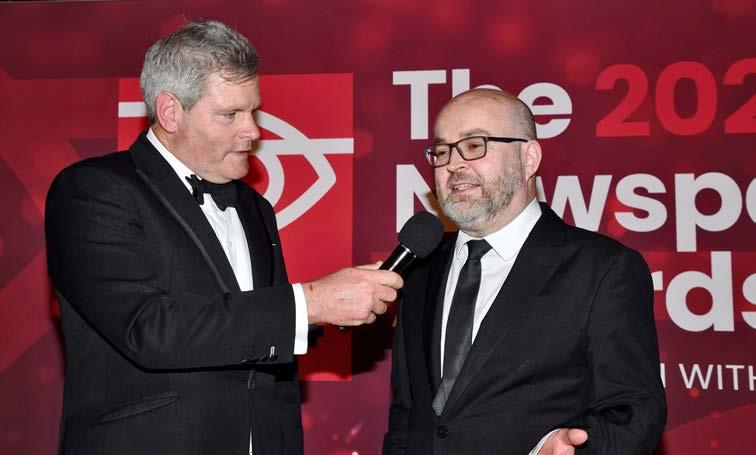
The team behind the Bush Bugle was nominated for a prestigious newspaper award last month.
We were shortlisted in the team of the year category at the Newspaper Awards, notably for the launch of this publication last autumn and another hyperlocal title that we started at the same time.
The judges said: “The passion for the project shone through, resulting in two new printed titles full of great content precisely targeted at their communities.”
Gary Cullum, the director of the Newspaper Awards, said: “For the second successive year the Newspaper Awards focused entirely on print, recognising the hugely important role that print continues to play.
“There’s no denying we live in the digital age, with tech giants commanding the advertisers’ pound. But, for many,

The 18th staging of Wendell Park Primary School’s annual “W Factor” talent show last month was a huge success, showcasing the great range of talent at the Shepherd’s Bush school on Cobbold Road.
The prize for best overall act was awarded to pupils Dior, Yaqub, Jabril and Connor for a medley of lip-synched boy band songs. Meanwhile, Adam, Matteo, Kian, Anna, Conan, Anre and Joshua were named best group for their performance of Seven Nation Army by the White Stripes. Hannah was named best individual for a gymnastics performance, while the prize for most original act went to Basma, Lamis and Basma, who sang a series of Arabic songs. About 30 pupils of all ages participated in the W Factor, with the varied programme of acts ranging from singing and dancing
newspapers and genuine, trusted news brands remain an essential part of daily life.
“The quality and quantity of entry to the 2024 Newspaper Awards is testament to the continuing resilience of the industry.”
The awards take place annually to “celebrate excellence and innovation in the printed newspaper”, with categories for local and national titles.
The hyperlocal newspaper of the year category was heavily subscribed with more than 30 entries and was won for the second year running by the Peckham Peculiar, which shares the same team as this paper. Judges said that its “passion for Peckham and its residents shone through on every page”.
All the winners were announced at a black-tie gala dinner on 26 March at the Hilton London Bankside, hosted by the TV sports presenter Mark Durden-Smith.

to comedy, gymnastics and instrumental performances.
Wendell Park’s head of school, Rosie Peters, said: “The W Factor is always a special night at Wendell and our pupils truly showed that their practice paid off. The acts were incredible. Thank you to all the participants, teachers, parents and friends that helped make it a success.
“The judges must have had a very tough time deciding upon the winning acts, as they were all simply incredible. The crowd participation was off the scale and the children on stage had the audience eating out of their hands.
“I think it’s sometimes difficult to comprehend how much hard work and effort goes into a whole school event of this kind – both behind the scenes and in front.
The Prince of Wales visited an ambitious and purpose-built £12 million “youth zone” in White City prior to its official opening on 21 April.
Amid the media circus that surrounded the health of his wife, Catherine, the Princess of Wales, who it has since been revealed is undergoing treatment for cancer, William toured the facility on 14 March.
During the visit he met the WEST Youth Zone CEO, Elanor Gunn, the chair, Mark Davies, and several groups of local youngsters, including the project’s Young People’s Development group, who were involved in the creation of the facility.
During his visit, William saw young people take part in several activities. He also participated in a game of basketball –sinking a basket on the fifth attempt after joking “we could be here a while” – and a game of pool, as well as joining a group of youngsters who were decorating biscuits. Prior to his departure he also unveiled a plaque commemorating his visit.
Reflecting on the prince’s visit, Gunn said: “We were delighted to welcome His Royal Highness to WEST Youth Zone to show him our fantastic new building and introduce him to our incredible and passionate staff team and young people.
“We can’t wait to open our doors to thousands of young people from across west London – today marks the start of a really exciting story. We are so grateful to our supporters for making this a reality.”
The WEST Youth Zone boasts a wide range of facilities including a rooftop football pitch, fitness suite, multi-use games area, teaching kitchen, indoor

“It’s at events like these that you can feel that Wendell Park has something special about it – the bringing together of communities for the greater good of the children. Simply put, a wonderful show and an event to be remembered!”
The W Factor was compered by the broadcast journalist Matthew Price, who has worked for BBC Radio 4’s Today programme and CBBC’s Newsround.
The judging panel consisted of Omar El Barkaoui, a drummer, producer and musical artist; the local resident and former Wendell teacher Rosina Permaul; Haley Kwai, a student from the Royal College of Music; and the singer-songwriter Tiwa King, who performed a song in honour of mothers in the audience in recognition of International Women’s Day.
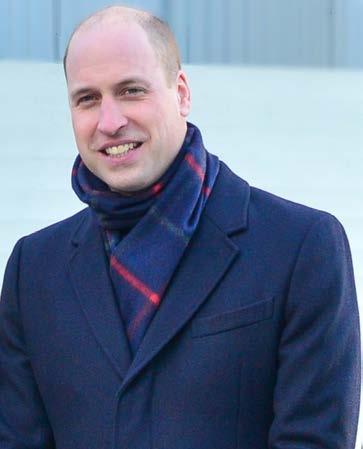
climbing wall, performing arts studio and cafe.
WEST, which stands for Where Everyone Sticks Together, is the brainchild of OnSide, a national youth centre charity. It joins 14 other sites across the UK that form the national OnSide Network, with seven further sites scheduled to open in the next two years.
The chief executive of OnSide, Jamie Masraff, said: “We are incredibly proud of WEST Youth Zone, so it was fantastic to have the opportunity to showcase it. A huge thank you to the Prince of Wales for taking the time to come and see our amazing new Youth Zone, which will help transform the lives of thousands of west Londoners through the power of youth work.”
Once the WEST Youth Zone opens to young people this month, it will operate seven days a week, with its facilities used by the new Ark Swift Primary Academy school during the daytime.
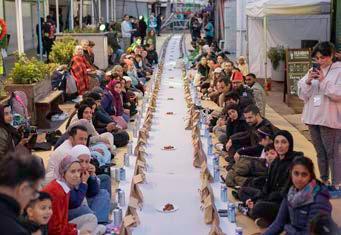

Shepherd’s Bush Market recently hosted an open iftar event.
The event was a feast inviting the local community to share in the iftar celebrations through a traditional meal. Iftar – the evening meal with which Muslims end their daily Ramadan fast at sunset, is a significant part of the Ramadan observance, often shared with family and community.
For Nazareth Kelif, the founder of Delina kitchen, the east African cuisine she cooks and serves daily at her restaurant in Shepherd’s Bush Market means so much more to her than just work – it’s her passion.
Delina – a word from Tigrinya, a dialect spoken in Eritrea and the Tigray region of northern Ethiopia – means “want and desire”, which reflects Nazareth’s heartfelt mission to share the food and tastes of east African culture with her customers.
Each plate is also a reminder of home, and a touching way to pay tribute and feel connected to her late mother, who died nearly three years ago.
Nazareth, who has lived in Shepherd’s Bush for 18 years, says: “My mum was the best cook, and she’s my inspiration and the reason why I do this.
“Every time I make a dish, it reminds me of her and makes me feel closer to her – there’s a lasting connection there.”
Nazareth grew up in east Africa with her three sisters and brother, and everything she ate was packed full of flavour.
She says: “Growing up, food was always really important. Cooking was really sociable and dinner times involved the whole family.
“One of my earliest memories at the age of about five or six was going to the market – which was vibrant and full of energy – and then helping my mum cook what we’d bought in the kitchen.
“Everything would be served in a big tray on the table, and the whole family would gather round.
“We don’t do starters and then mains or anything – everything just comes together and is shared.
“Typically everything is eaten with your hands, too – you tear the bread and dip it in the sauces.”
Nazareth now lives with her 15-yearold daughter in Shepherd’s Bush,

Delina serves up delicious Ethiopian and Eritrean food from its base in Shepherd’s Bush Market. Its founder, Nazareth Kelif, shares her story
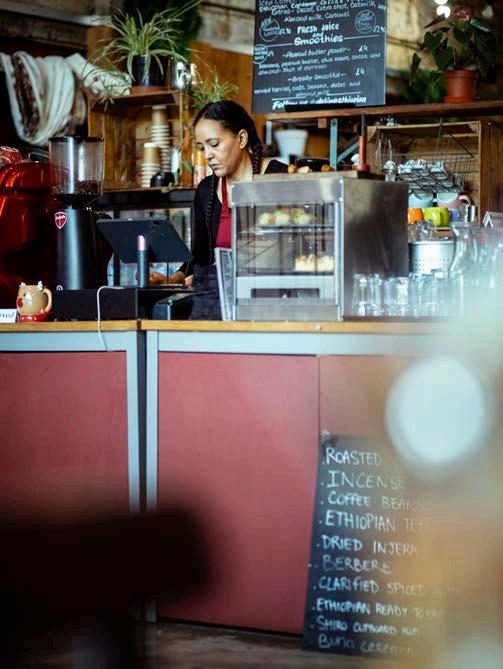
where she has resided since 1995 after moving to the UK in 1994, when she was in her 20s.
She says: “I’ve always loved Shepherd’s Bush – it’s always been very diverse and has everything I’ve needed to cook the food I love, so it feels a little bit like home.
“I remember when I first came to the UK and someone cooked Ethiopian food and made the bread for me – I really didn’t like it, and it made me feel a long way from home.
“It didn’t feel authentic, and it wasn’t what I grew up with – it was nothing like my mother’s cooking. It’s the spices we use in our cooking that really make Ethiopian and Eritrean food special.”
However, while food has always played an important role in her life, Nazareth didn’t always have a career in catering in mind, and had a number of roles in admin and childcare before she started Delina, in July 2013.
Nazareth, who sources her ingredients from east Africa and still tries to visit regularly, says: “I’d always wanted to be able to work for myself, and I knew I needed to start by doing
something that I knew well, and was familiar with – and that was food.
“I also really wanted to do something that connected me to back home and the culture, and I felt that was important.
“That’s how it began, and then once I started I became more and more inspired. It was amazing to receive such positive feedback from customers about dishes I’d regarded as quite simple.”
Initially Nazareth’s business started as an Ethiopian street food stall in west London, and she travelled around the local markets in Hammersmith, Fulham and Shepherd’s Bush with her recipes.
Now, Delina is located permanently in Shepherd’s Bush Market – one of the oldest markets in west London –where it has been based for just over four years. The kitchen is run by a close-knit team of just three people, and is situated in arch 176.
The space can comfortably seat 50 people, the team make everything on site, and the restaurant is open every day for walk-ins and takeaway from 11am to 6pm generally, as well
as opening later for private booked events and 90-minute cooking classes from £50 per person, where customers can learn how to cook authentic Ethiopian food for themselves.
If customers are looking to try one of the “everyday” dishes found in Ethiopian cuisine, Nazareth always recommends they order the beyaynetu – a large vegetarian platter, priced £15 to share, which consists of a mix of six small dishes.
Customers can choose these dishes from a selection, which includes misir wot, a spicy lentil, onion and tomato dish with garlic and berbere spices; and Delina’s signature dish and one of Nazareth’s personal favourites, shiro wot – a spiced chickpea stew.
There’s also a spinach and kale dish known as gomen, and kik – a yellow, mild split-pea dish with turmeric, garlic and ginger.
The atakilt – potatoes, carrot and cabbage with a turmeric and ginger sauce – is also very popular, as is the kay sur, which is a braised beetroot, potatoes and red onion dish. There’s also the habesha salad, which is made
up of leaves, tomatoes, red onions and chilli.
If customers want more of a small snack, they can order three taster dishes from this menu instead, and all dishes are served with teff injera – an Ethiopian flatbread that is gluten-free and made from scratch, or quinoa or brown rice.
When it comes to more special occasions, meat traditionally plays a bigger role, but within Ethiopian culture, among Orthodox Christians the recommended consumption of meat, dairy and eggs is limited. As a result, a lot of Ethiopian and Eritrean cuisine is vegan.
Nazareth says: “I’m not vegetarian, but growing up, vegetarian food was really important and we were expected to not eat meat for around 180 days a year.
“We kept meat and vegetarian food very separate, and even washed pots that had contained meat separately, too.”
On the menu there is a selection of tibs dishes – an east African-style stir fry – that do contain meat, including awaze, a spicy lean beef with onion, chilli, garlic and ginger, and lega, which is an aromatic lamb dish with onion, tomatoes, rosemary, fresh chilli, garlic and ginger.
One of my earliest memories at the age of about five or six was going to the market –which was vibrant and full of energy – and then helping my mum cook what we’d bought in the kitchen. Everything would be served in a big tray on the table, and the whole family would gather round
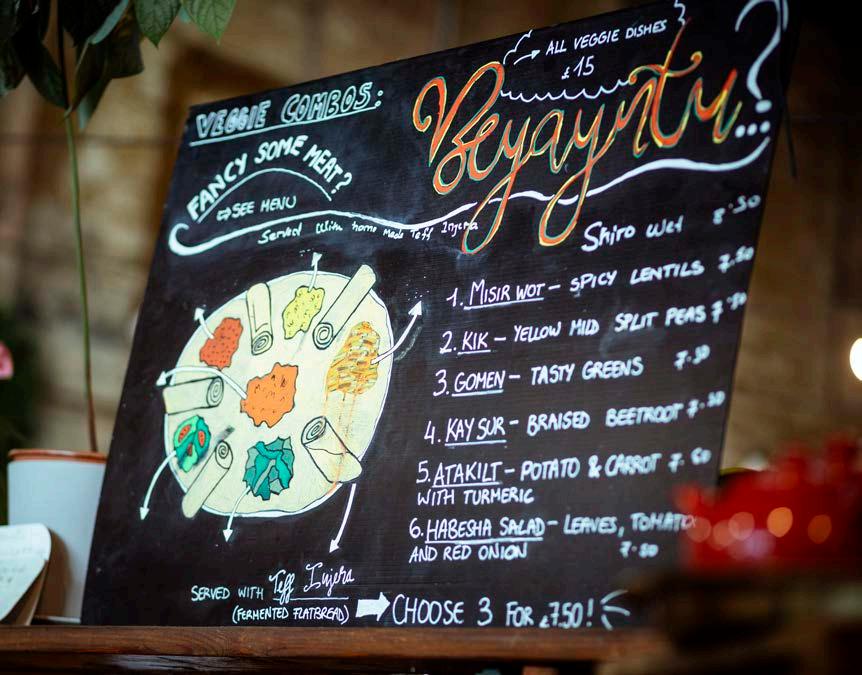
Nazareth is also known for her wot – a slow-cooked curry stew –and she loves being able to share the wot dishes that mean so much to her with people who haven’t tried them, particularly the doro wot – a chicken dish cooked in a traditional rich onion and berbere sauce with a hard-boiled egg. It’s a dish that her mum was renowned for.

She says: “The slow-cooked spicy beef stew – called zegni – is also very,
very popular with our customers. The taste of the berbere spices [a key spice mix used in Ethiopian and Eritrean cooking, typically consisting of chilli peppers, coriander, garlic and ginger, among other ingredients] – people just love it.

From new planting to full redesign, discover how working with a creative, experienced designer can unlock your garden’s potential. For a free consultation, call 07587 083999 email: ruth@ruthtreacher.com www.ruthtreacher.com

Above: the beyaynetu platter is popular with customers. Opposite page: Delina’s founder, Nazareth Kelif
“I just want everyone to try east African cuisine – it tastes so good it just has to be shared.
“I like being able to share the food that means so much to me with people who have perhaps never tried it,” she adds. “It’s so rewarding.”
I help busy women have MORE energy to feel
All these symptoms are related to your gut health. I can help you remove or reduce these symptoms. Your health is the key to unlocking your greatest potential.
One of the most talented English-born footballers of all time, Stan Bowles was irascible, irrepressible and inspirational.
True, he could also be infuriating, but that was all part of his charm.
When Stan died on 24 February this year, aged 75, the outpouring of love and affection from QPR fans, as well as from former team-mates and figures from the wider world of football, was noticeably heartfelt, speaking to the fact that for many lovers of “the beautiful game”, how a player makes you feel when watching them matters more than how many trophies, caps or honours they win.
Stan’s career – devoid as it was of silverware, save for a European Super Cup winner’s medal that he took home with Nottingham Forest in 1979 –proves this point. Like Rodney Marsh, Charlie George, Frank Worthington, Peter Osgood, Alan Hudson and Tony Currie, Stan was a great maverick talent whose aesthetic brilliance on the pitch was matched only by the colourful life he led before and after the referee’s whistle blew.
Rob Steen, in his magisterial book
The Mavericks: English Football When Flair Wore Flares, wrote of Stan: “To him, football was merely a means of sustaining an abiding passion for gambling, for having a stake in the uncertain, for walking a tightrope.” It’s an interpretation that tallies with Stan’s own description of
himself as a “gambler who happened to play football”.
Stan played football like he gambled – by going all in, as extravagantly and wholeheartedly as he possibly could. By his own admission, the most money he ever won in a day was £18,000, and his biggest loss was £15,000.
But that doesn’t even tell half the story, for tales of Stan’s colourful extracurricular scrapes could fill a book by themselves. How many of them are true? Lord only knows, but the myth-making, exaggeration and hyperbole were always part of the fun with Stan.
Here’s a brief sample of Stan-related anecdotes, the veracity of which can probably never be established: the time Stan bet a Carlisle team-mate he would nutmeg an opposing player 20 times in a match but only managed 16; the time he and QPR team-mate Don Shanks spent a night in a Belgian jail after getting drunk; and the time he deliberately knocked the FA Cup off a presentation table with a “stray” kick during a match at Roker Park at which Sunderland were proudly displaying it and caused a riot (press reports from the time suggest it may have been Tony Hazell and not Stan whose kick upended the trophy).
Stan was born in Moston, Manchester on 24 December 1948, the son of a Man City-supporting window cleaner. He honed his silky dribbling skills on the streets of Manchester




and signed apprentice forms with City straight after leaving New Moston Secondary Modern school in 1967.
Soon afterwards, he enjoyed a dream senior team debut, scoring twice against Leicester in a League Cup game on 13 September after which – according to the Manchester Evening News – he left the field to a “hero’s ovation”.
Thereafter, Stan’s City career stalled, with a series of run-ins with the management team restricting his opportunities for first-team football. The City coach Malcolm Allison later admitted despairingly: “He had brilliant ability but I couldn’t control him.”
A five-game spell at Bury followed before Stan rebuilt his career and dazzled at Crewe and then Carlisle, winning the adoration of both clubs’ fans with his mesmeric, crowdpleasing abilities and canny eye for the goal. The Crewe manager Ernie Tagg – like Allison and Joe Mercer at Man City – found Stan hard to handle, quipping: “If he could pass a bookie’s as well as he passes a football, he’d be a very rich man.”
Stan signed for QPR in 1972 and it was at Loftus Road that he would find his spiritual home. Undaunted by assuming the number 10 shirt that the recently departed icon Rodney Marsh had made his own, Stan flourished, aided by the attacking football philosophies that QPR embodied at the time. “QPR were an ambitious
Research UK
Saturday 8 June Kensington Gardens, London
Join us for our family-friendly 5k walk, bringing together everyone impacted by dementia.
Become part of a community determined to make history and help end the devastation of dementia, once and for all.
Events also in Edinburgh, Southampton, Liverpool, Nottinghamshire, and Cardiff.
Secure your place today and together, we will walk for a cure.

Scan or visit alzres.uk/ London-Newspapers to find out more
club,” Stan later reflected. “But more important, they played nice football.”
Although his off-the-field life remained as chaotic as ever, QPR fans adored him for his skills and unaffected, man-of-the-people personality – after most home games he would walk 50 yards or so down the road to drink with supporters at the Springbok pub. “They saw me as one of their own kind. I could do no wrong [in their eyes]; if I played badly it was always someone else’s fault.”
In some respects, QPR’s 1975-76 campaign serves as an apt metaphor for Stan’s wonderfully flawed career. Playing some irresistible and freeflowing football, with shimmying, feinting trickster Stan centre stage, when QPR completed their 42-game league campaign they were a point clear of nearest challengers Liverpool and a first league title in the club’s history was within their grasp. An agonising 10 days later, the Reds beat Wolves to deny QPR the championship by one measly, meanspirited point.
Equally mean-spirited was Stan’s treatment by successive England managers. He won a mere five caps in all, spread over nearly three years, and was never fully trusted by any of the three national managers he played for. Mind you, he didn’t help his cause by walking out of the England camp after Joe Mercer substituted him after 64 minutes of a match against Northern Ireland.
“I was never given a long enough run in the team,” Stan would later reflect. “Every international player takes time to settle in and I wasn’t given the chance.”
Stan’s spell at QPR ended in 1979 when – by now aged 31 and in gradual decline – he signed for the European Cup winners Nottingham Forest. “It was a tragedy we never won any honours,” Stan would later reflect sadly of his departure from Loftus Road.
At Forest the union between a maverick player in Stan and a maverick manager in Brian Clough was always destined to end badly: Stan walked out of the club on the eve of the 1980 European Cup final on a point of principle after Clough refused to play him in a testimonial match for his friend John Robertson. Spells thereafter with Leyton Orient and Brentford were an anticlimactic way for Stan’s career to wind down.
In retirement though, if anything, Stan’s reputation and legend grew. In 2012 a poll of QPR fans anointed him the club’s greatest ever player, and many of the club’s former players also hold fond memories of Stan – even those who were not his contemporaries.
Trevor Sinclair, the former England winger who played for the Hoops from 1993 to 98, outlines to the Bush Bugle some of the qualities that made Stan so special.
“Stan was larger than life,” Trevor says. “He was also very encouraging towards me when I was a young lad at QPR. He was a really charismatic guy who really wanted players to do well, particularly the creative players.
QPR fans adored him for his skills and his man-ofthe-people personality. After most games he would walk 50 yards or so down the road to drink with supporters at the Springbok pub

The prodigiously talented footballer Stan Bowles was a favourite among fans, who loved his immense charisma, creative play and colourful antics both on and off the pitch
WORDS BY LUKE G WILLIAMS
“The fans loved him for the goals he scored, the way he scored those goals, and the way he played and carried himself on and off the pitch. He was a complete entertainer. He played without fear, with youthful spirit and exuberance. He wasn’t afraid to make mistakes and was the sort of player with the sort of attitude which I tell young players today that they should try and have.
“The modern game has become more robotic because of developments in sports science, the development of pitches, the approach of certain managers – the landscape of football has changed. But we have to make sure that in modern football we don’t lose sight of players with the sort of creativity Stan had.”
Trevor also reflects on why Stan –as well as many of his fellow 1970s “mavericks” – did not receive the
opportunities at international level that his rich talents warranted.
“In England we like our professionals to be yes men – to be robotic, to not have too much personality. But if you’re creative on the pitch, you’re probably going to have that scallywag attitude off the pitch too – that worked against him when it came to international caps.”
Tragically, in his later years Stan suffered from Alzheimer’s, a disease that robbed him of many memories of his glory days. Given how treasured many football fans’ recollections are of what Stan did, how he played and how he made them feel, there’s a cruel irony in that.
But then you could argue that the story of Stan Bowles is a melancholic one in many ways; as much a tale of what might have been, as well as what was.
When we remember Stan, should it be through the prism of a glass (containing an alcoholic drink, of course) half full or half empty?
Trevor Sinclair plumps for the former, as do most QPR fans.
“When I speak to young players at my academy, I tell them to watch players from the past and Stan gets a mention alongside Cruyff, Pelé and Maradona,” Trevor says.
“He may not have the fame and reputation and caps of those all-time greats, but he was the same sort of player with those majestic, mercurial skills, who would make the fans gasp because of the audacious things he would do on the pitch.
“Stan was great company and he was a splendid servant to QPR,” Trevor adds. “The fact that we are still talking about him today shows the impact he made.”
Ask any stallholder, and they’ll tell you the 1980s were the golden years for Shepherd’s Bush Market. The crowds on Saturday mornings were so thick that at some points you had to walk sideways to squeeze your way through. Heaven help you if you were pushing a pram. The staccato patter of cockney stallholders, the polyrhythms booming from the African Music Centre, the red bream and live crabs glistening at WH Roe’s, the scent of incense sold in foilwrapped packs – there was nowhere else like it in west London.
Today’s market is still a place where you can uncover fourth-generation family knowledge, find food from all corners of the world and discover speciality wares. It’s a place where cultures, characters and produce combine into one uniquely Shepherd’s Bush space – one that is treasured by all who go.
Text adapted from shepherdsbushmarket.org
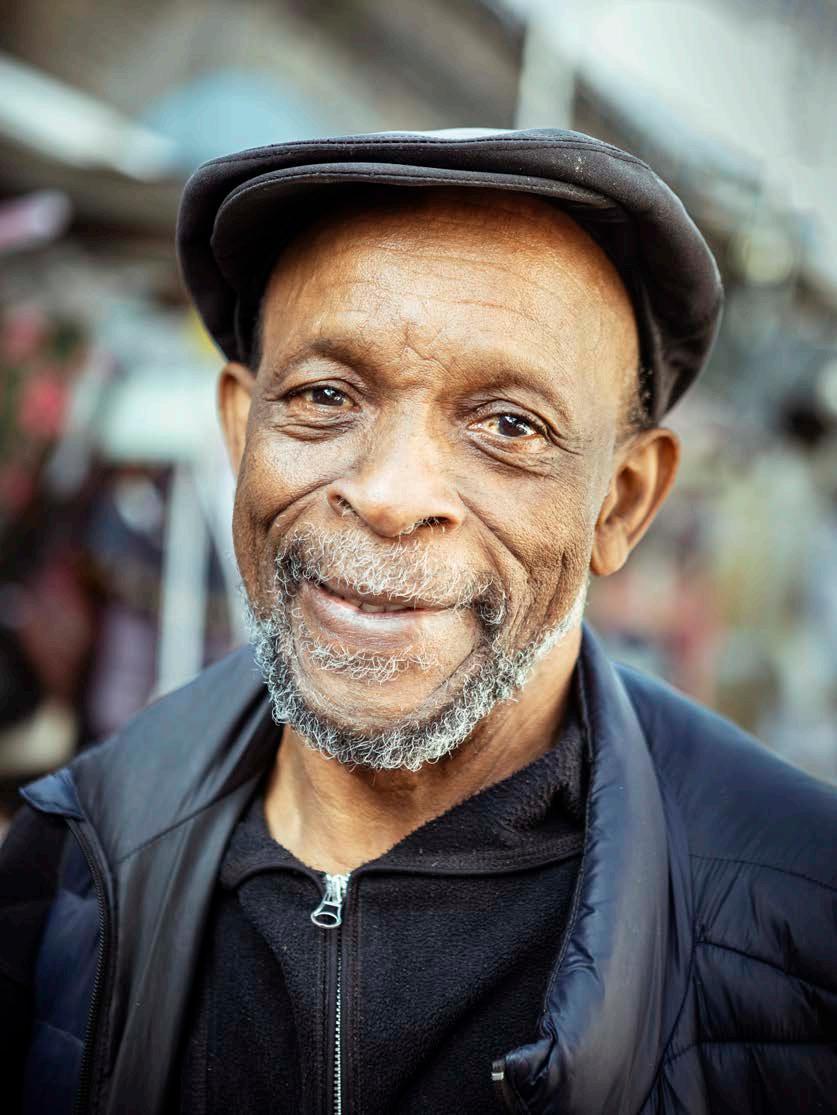
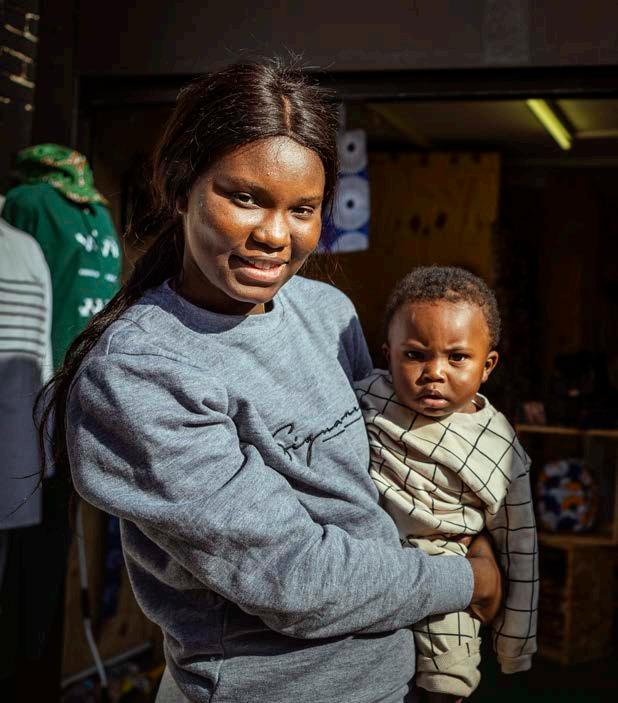

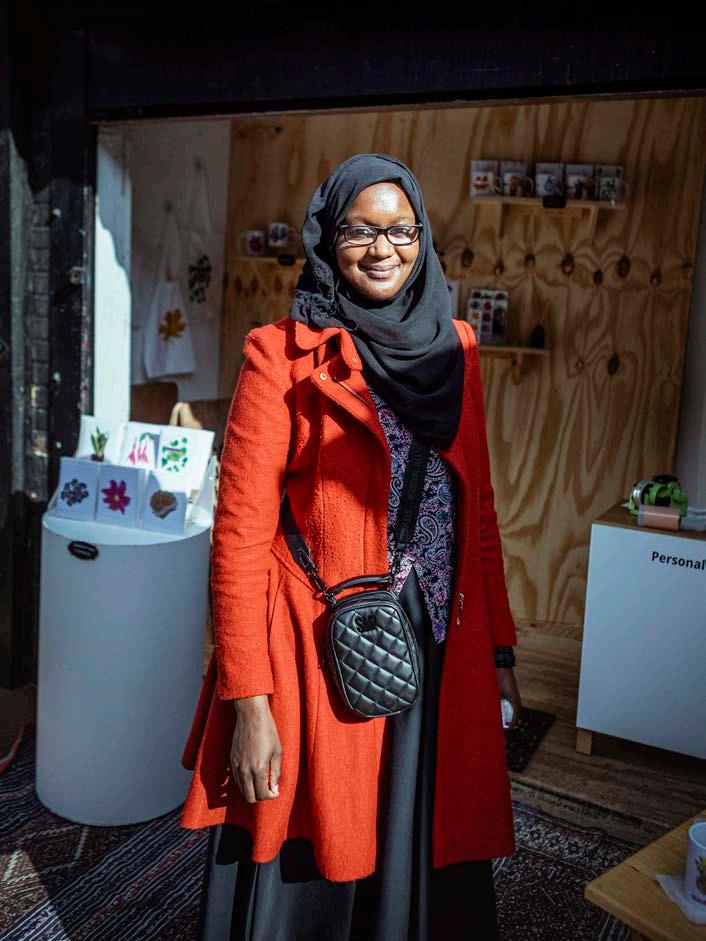


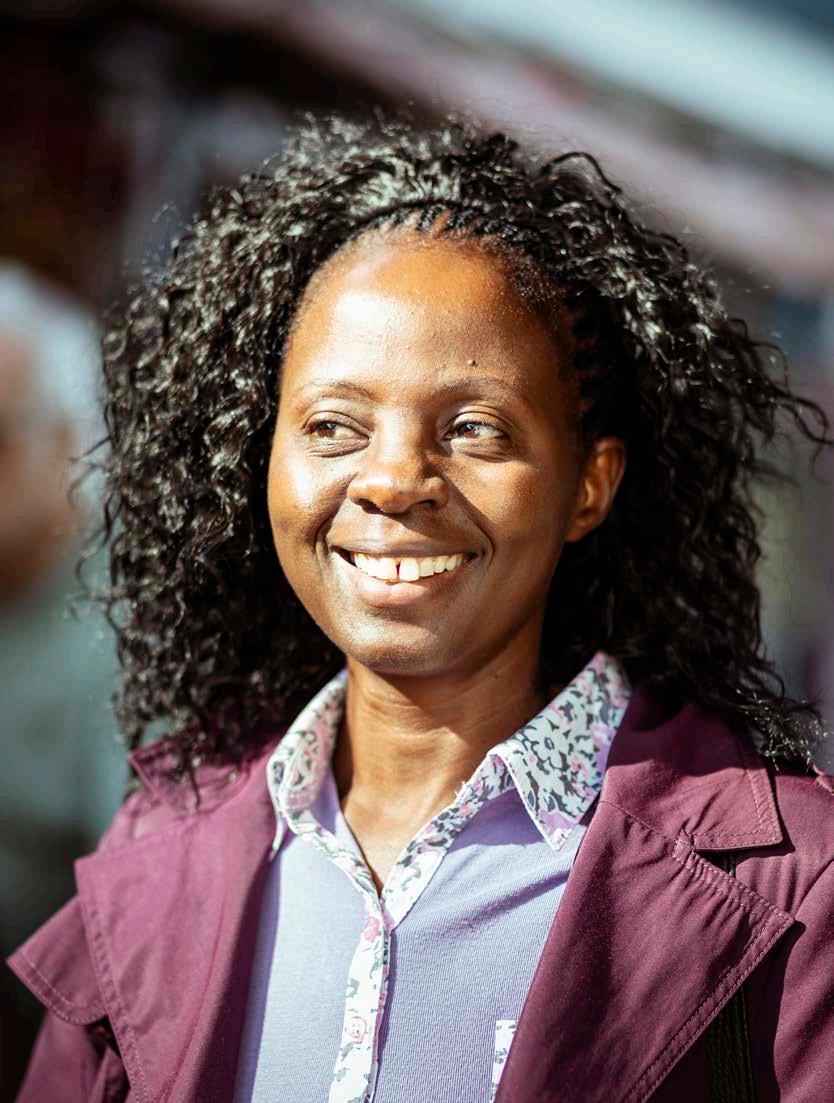
“Shepherd’s Bush was my studio, man,” laughs Naeem Mahmood, the award-winning film director behind the recently released, feature-length movie Gods of Their Own Religion, as we discuss how his beloved west London home influenced his DIY, get-it-done film-making attitude.
It turns out that the desire he had to get out his front door and make things happen – running around with friends and a camera asking anyone he could find to be part of his early creations – would stand him in good stead when, in the middle of the Covid19 pandemic, he decided to make an independent film with a cast and crew of 170, a run-time of one hour, 40 minutes and basically no budget or outside support.
But how do you go from knocking on your neighbour’s door asking to borrow a taxi for one of your early films – “I’m laughing ’cause where I’m sitting now I can literally see his front door, and I can’t believe I used to just do that” – to taking on a project that even major film studios would have considered a challenge?
As Naeem answers, his face fills with a warm smile. “If someone had told me that I could do this, I would have said: ‘Absolutely impossible,’” he says. “But what the events of 2020 did, the lockdowns and everything that unfolded, they got me thinking outside the box. They got me thinking outside of what you’re taught or conditioned to believe around how films should be made. So I threw away the so-called rule book and got started.”
His fearless approach involved beginning filming without a script, casting extras who had turned up on the day in lead roles, and filming in deserted locations across the UK while the rest of the industry was working over Zoom or confined to small studios.
Naeem found that young creatives, suddenly starved of work experience or entry-level jobs, were desperate for the experience and threw themselves headlong into what he was trying to do. The idea of the film being more than just a plot, and becoming more like a family using the experience of making it as a way to deal with what they were going through, soon comes out in Naeem’s recollections.
“Making this film was an outlet for a lot of people, particularly for the younger creatives who were involved,” he says. “It got them out of isolation, where they were suffering a lot of mental challenges, and it gave them an outlet to just be creative again and be among people and bring some sanity back in their lives.”
Gods of Their Own Religion is a sci-fi thriller set in a dystopian near future, where a technocratic autocracy is controlling nearly every aspect of people’s lives. Against this backdrop, a few renegades try to find a way to stay true to themselves and remember how things were before. With shades of The Matrix, Nineteen Eighty-Four and No Country for Old Men, it references seminal films and books that have come before, but is entirely its own piece.

Film director Naeem Mahmood talks making movies on a shoestring, his new dystopian thriller and how Shepherd’s Bush has been a big influence on his life and work
WORDS BY LAWRENCE DIAMONDI ask Naeem if the film, with its tagline “no one rules if no one obeys”, was a direct comment on lockdown and the policies in place at the time, and although he acknowledges how much those events affected the mood of the film, he’s clear that the main focus is the desire for individuals to think for themselves.
“I think for me, the most fascinating art pieces are always where there’s a bit of ambiguity and you allow audiences to be interactive and take what they want out of it,” he says.
“We don’t always have all the answers. I wanted the audience to create their own interpretations of what the film was about. But certainly the dystopian universe depicted in the film is caused by the most dangerous of all mental epidemics – mass psychosis.
“The element of technocracy that became the backdrop of this movie was very much born out of the times. In the film you have these two groups: one group of defiant dissenters who refuse to conform to the ‘brave new world’, then another group who are being swallowed into it. But it’s not
black and white that one group is good and one group is bad. Each is being manipulated by more nefarious forces in the unseen.”
Although you could interpret the film as an anti-lockdown piece if that were your agenda, it’s clear from speaking to Naeem that he’s much more interested in how the film shows the uniqueness of people, and what we can achieve when we set our minds to it. This is regardless of the obstacles that stand in our way – whether it’s the notoriously difficult-to-crack film industry with its lack of funds and opportunities, or a global pandemic.
“For me now, and even at that time, I could feel it – [the film] was a celebration of people coming together, and humans coming together. And when we’re together we’re at our best,” he says.
“Even though the people who were involved had different thoughts and beliefs and political views, it didn’t matter. Once you get creative and you get stuck in and get your hands dirty, all of that goes away and we just sort of remember who we are again. Especially at that time when there was
a lot of separation and division. It was a beautiful thing to see. That’s why the film became a really important project.”
Indeed, it is in talking about how he got started in film – going out and getting stuck in with no mentors or guidance – and his attitude to how he would like to see young film-makers encouraged, that you truly see the special fire that burns inside Naeem. It’s a fire that’s apparent to me even as I talk to him through the somewhat disconnected medium of Zoom. After all, how else could one man create a film of this magnitude?
As he tells me: “I don’t feel there’s enough passion and support for young creatives. Although I always feel that the young creators do have the power, but they’ve just got to take the bull by the horns and flip everything on its head. They can create their own industries.
“Sometimes we give our power away, or we’re looking for a saviour or a big industry or institution to come and help us and give us the distribution or the funding, or it becomes: ‘If I don’t have the funding,
I can’t do anything and it’s little me.’ No, we’re a lot bigger than that. Particularly when you’re younger, you know you can take a lot more chances.”
He laughs as we find ourselves naturally returning to the point where our interview – and his own career – started. “Yeah, you can turn up at places and knock on doors and people will be really enthused by your passion,” he says. “There will be rejection, but just keep going. You’ll find that the world is your oyster.”
As our conversation has led us from Naeem’s flat, to his neighbour’s front door and all over lockdown Britain making a feature film, it seems apt that we have ended up back in Shepherd’s Bush, the area that undoubtedly triggered a creative spark in him at a young age. I ask him what he thinks is so special about the place that inspired him to take the path he did.
“I think creatively, it’s just the vibrancy,” he says. “All the different cultures and colours – that definitely had a big part to play in a lot of my early work.
“People often say they can’t quite box in my characters or know where they’re from, and I think that comes in some way from my upbringing in Shepherd’s Bush. You can’t pigeonhole us because we’ve got so many different influences.
“Also, when people talk about diversity, it is effortless diversity [in Shepherd’s Bush]. It is not the sort of
People
often say they can’t box in my characters, and I think that comes from my upbringing in Shepherd’s Bush. You can’t pigeonhole us because we’ve got so many different influences

tick-box diversity that we often see. Growing up, people didn’t really talk about their race, stuff like that. We all just got along and meshed in, because you know, we’re from Bush.”
Talk turns to the future – both Naeem’s and the film’s. And with showings lined up at film festivals across Britain and even a trip to Ibiza in the calendar for a screening, it’s clear Naeem has a lot to look forward to this year.
However, when he does come back to Bush, as he lovingly calls it, there is one place that he heads straight to: Osman Juice in Shepherd’s Bush Market. Naeem lights up as he tells me about his favourite local spot, which is known for its delicious, freshly pressed juices.
“He does the best juices in London,” Naeem says. “He’s got all these fusions of different fruits and veg and he’s got this incredible Ugandan ginger.


Above: Naeem at a screening of his film, Gods of Their Own Religion
“Making a big feature film is a huge undertaking physically and mentally, particularly the kind of film that I was making, so Osman Juice would nourish me really, really well with his turmeric and ginger.”
And as Naeem is proving, as long as you have a huge dollop of Bush self-belief, and the best juice bar in London on your doorstep, you don’t need a major studio behind you to make great things happen.





Largely forgotten and absent from public consciousness after decades of decline prior to its closure in 1984 and demolition a year later, White City stadium was once one of the architectural wonders of Edwardian Britain.
Built with the express purpose of hosting the Olympics, on the front cover of the official programme for the 1908 London Games the arena was hailed as “The Great Stadium, Shepherd’s Bush”.
When the media were granted access to the huge facility prior to its official opening and the commencement of the Games, they described it in awestruck terms, using flattering appellations such as “The Mighty Stadium”.
The Birmingham Daily Gazette declared of the impressively imposing facility: “It is as broad as the Circus Maximus in Ancient Rome, and would comfortably hold the Marble Stadium at Athens or the Albert Hall seven times over.” Another impressed journalist pronounced the stadium “without doubt the most perfect sports ground in existence”.
The historian Joanna Oyediran of Iya London, who runs a local walk titled White City’s Hidden History, emphasises how ahead of its time the White City stadium was. “The arena’s shape and facilities look familiar today,” she says. “But this multipurpose stadium would have been revolutionary for a spectator in 1908.
“It had covered grandstands along the straights and open terraces for standing at each end. The stadium had a swimming tank with a demountable diving tower. It also had a sports pitch surrounded by running and cycle tracks.”
Butterfly-effect style, White City stadium would never have been built had it not been for events elsewhere – namely, the 1906 volcanic eruption of Mount Vesuvius in Italy, which devastated the nearby city of Naples. With the Italian authorities diverting funds originally intended for the 1908 Olympics in Rome to reconstruct Naples, London answered the call for a replacement city to host the modern Olympiad, which had only been staged on three previous occasions.
Truth be told, many saw the London Olympics as a mere adjunct to the more prestigious business of the Franco-British exhibition of 1908, a huge international fair held in what

With the 2024 Olympics just around the corner, we discover the fascinating story of the White City stadium, which hosted the Games in 1908
is now White City. It celebrated the 1904 Entente Cordiale, a treaty between Britain and France that formalised a new spirit of cooperation and friendship between the old crossChannel rivals.
In the early 1900s, the land that would host the exhibition’s extensive buildings and pavilions – which were finished with dazzling white stucco and known as the Great White City, giving the area we know today its name – was arable farmland.
Its swift transformation into a destination capable of welcoming millions of international visitors was testament to the advanced infrastructure of early postVictorian Britain. It was also down to the visionary brilliance of the
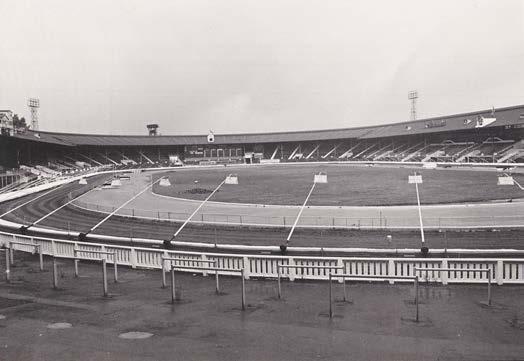
Hungarian-born impresario Imre Kiralfy, who masterminded the Great White City.
The Olympic stadium was a late and rapidly built addition to the project, overseen by Kiralfy after the Olympic committee persuaded him to include a stadium for the Games on the Great White City site, in return for threequarters of the gate receipts from all Olympic events.
The stadium’s first stanchion was laid on 2 August 1907, yet less than a year later – on 14 May 1908 – King Edward VII pronounced the stadium officially open and it staged its first competitive sports event – an athletics event hosted by the Finchley Harriers. Designed by the civil engineer John James Webster, a Lancastrian

who usually specialised in suspension bridges, and built by the Hammersmith-based firm George Wimpey, the stadium utilised 5,000 tonnes of steel and was built at a bargain cost of £80,000, which translates to £12.5 million in 2024 prices (by way of comparison, the new Wembley stadium, which opened in 2007, cost £1.27 billion in 2024-adjusted prices).
The scale of the stadium was jawdropping – it was estimated it could accommodate 150,000 spectators, with seating for about 68,000. The stadium running track measured a third of a mile, while the unheated outdoor swimming tank was 100 metres in length.
The 1908 Games were a groundbreaking event and success, laying the foundations for a number of Olympic conventions that still exist today. For example, it was the first Games at which participants competed under the banner of national teams – at the previous three events, teams could consist of athletes from different countries.
The Games also established the length of a marathon as 26 miles and 385 yards – a measurement that enabled the race to begin outside the royal nursery in Windsor (where it could be seen by the royal children) and climax by the royal box in the stadium.
The marathon proved perhaps the most dramatic event of a highly successful Games. The Italian runner Dorando Pietri entered the stadium in the lead, but collapsed several times before the finish line with exhaustion. Helped to his feet repeatedly by stadium officials, he crossed the line first but was disqualified after a protest by the American team. The race and the controversy surrounding it made Pietri a worldwide celebrity and he was awarded a silver cup by Queen Alexandra by way of compensation for missing out on a gold medal.
Clockwise from top: archer Beatrice Hill-Lowe won a bronze medal at the 1908 Olympics; the British relay swimming team, who won gold; crowds in 1908; the stadium circa 1960
After the conclusion of the London Olympics, confusion reigned concerning the future of the stadium. At one stage it looked as though it would be set for rapid demolition. “It seems a thousand pities that so magnificent a sports arena – undoubtedly the finest in the world – should fall into the hands of the destroyers,” lamented Kiralfy in September 1908, “but I am not able to see any other prospect.”
Thankfully, the stadium was saved and was used for sporadic athletics
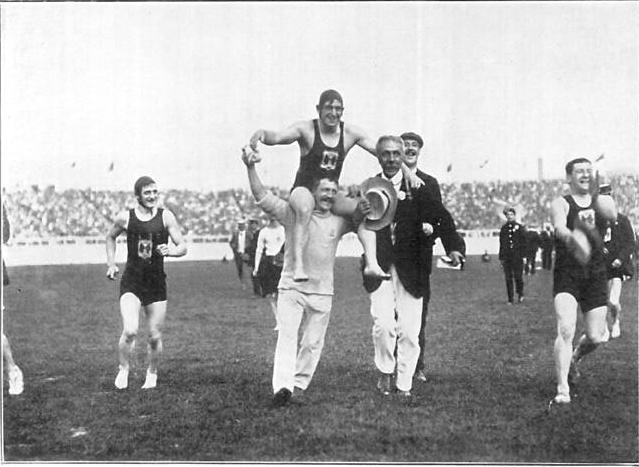
meetings for a while, until it was granted a new injection of life when it was leased by the Greyhound Racing Association in 1926. A dog track replaced the athletics track and new terracing was erected.
From 1927 until 1984, the stadium hosted regular greyhound racing events – some of them attracting huge crowds of 90,000 or more. A running track was also reinstalled in 1931, enabling it to become the regular home of the British Amateur Athletics Championships until 1970.
Other notable events also found their way to the stadium over the years – including several high-profile boxing matches and a 1966 football World Cup match between Uruguay and France. From 1976 until 1978 the stadium also housed the White City Rebels speedway team.
By now the stadium was badly in need of redevelopment, but in the end the lack of a steady commercial income made it unviable and the new owner of the land, Stock Conversion, initiated demolition. By March 1985 the once “great stadium” was no more, a conclusion the Hammersmith and Shepherds Bush Gazette lamented as a “sight for sad eyes”.
Later in the year, the BBC bought the freehold of the stadium site for £30 million and announced plans for a new building to house its radio operations. In the end, the BBC White City building that opened in 1990 ended up housing offices and editing suites rather than radio. When the foundations for the new building were laid, remnants of the old Olympic swimming pool were uncovered – a reminder of the days when the eyes of the world turned to White City.
In 1989, the Pogues paid elegiac tribute to the lost stadium in their
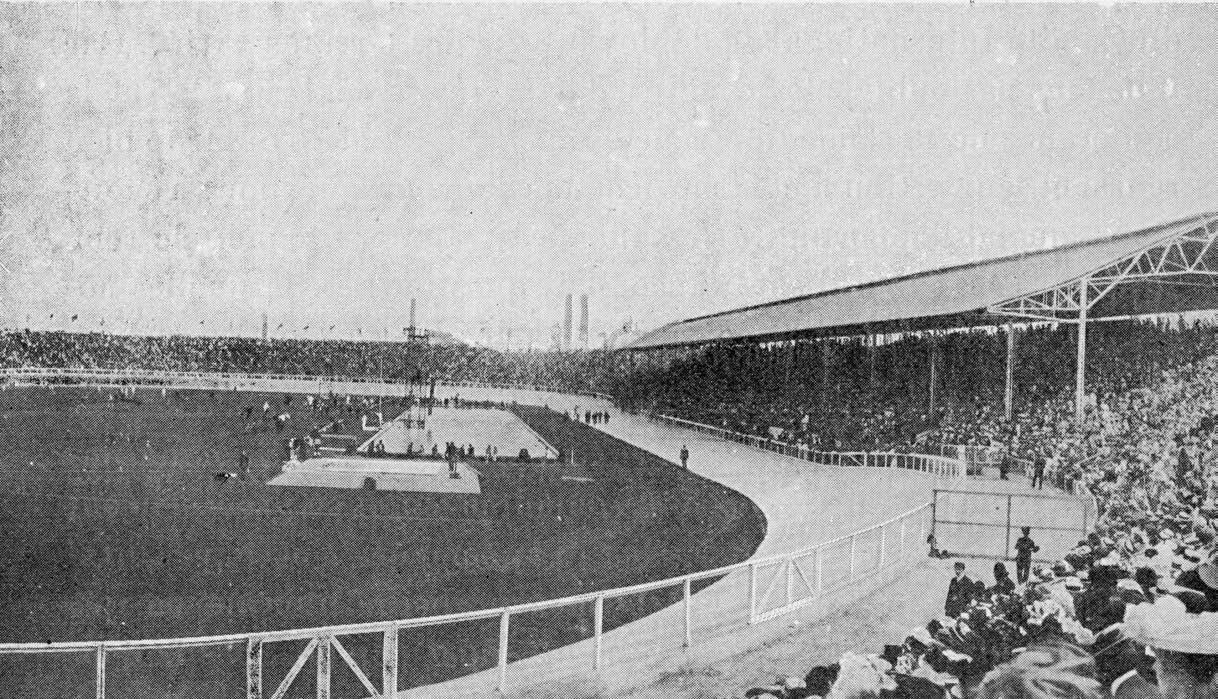
track White City, with the late, great Shane MacGowan singing: “Oh, sweet city of my dreams / Of speed and skill and schemes / Like Atlantis you just disappeared from view / And the hare upon the wire / Has been burnt upon your pyre / Like the black dog that once raced out from trap two.”
The BBC sold the majority of its White City buildings in 2015 and today the area once occupied by the stadium is part of White City Place, its Olympic history marked only by a couple of plaques.

The Birmingham Daily Gazette declared of the impressively imposing stadium: ‘It is as broad as the Circus Maximus in Ancient Rome, and would comfortably hold the Marble Stadium at Athens or the Albert Hall seven times over’

Clockwise from top: the stadium in 1908; Dorando Pietri crosses the finish line at the 1908 Games; a plan of the stadium; Alan Sinclair Paterson shaves the bar at 6ft 4in to win the AAA high jump title in 1950


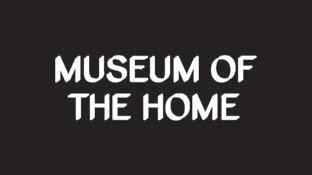
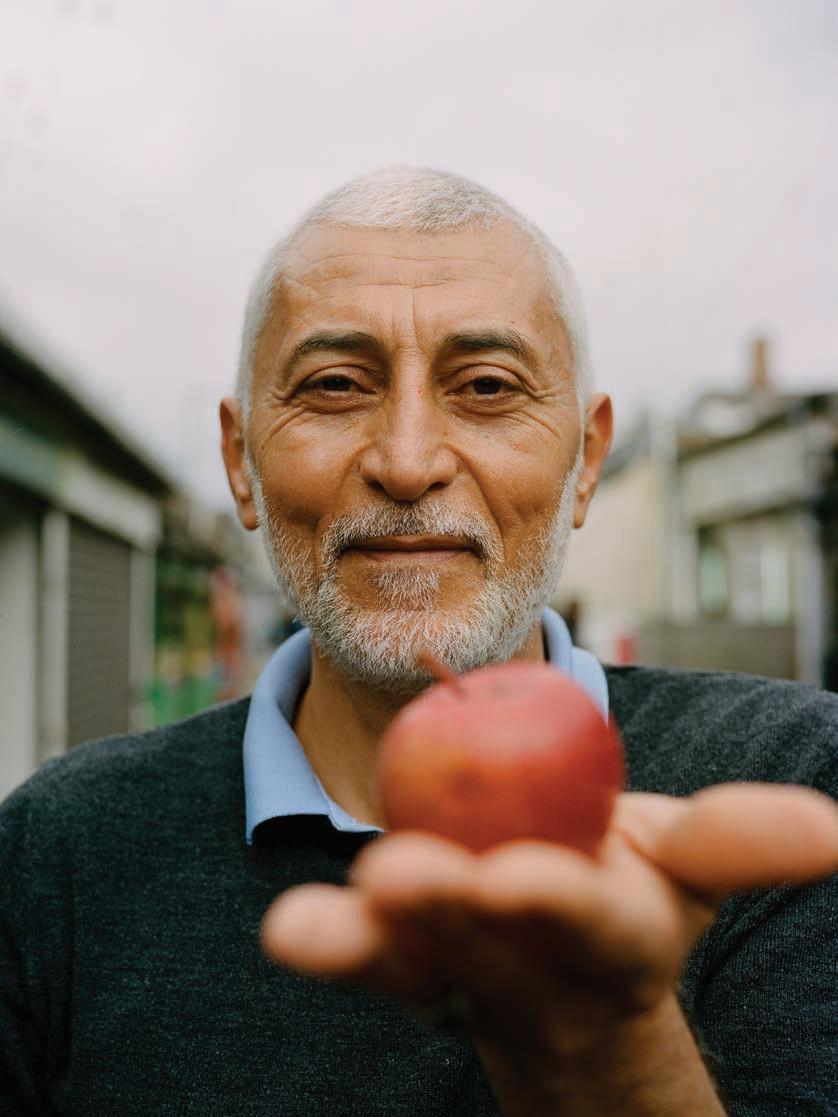 Fancy a pint? ... Of delicious juice. You can down a few and feel better than before. That’s refreshing, cheers Osman.
Nearest tube Goldhawk Road. Scan the QR code for directions.
Fancy a pint? ... Of delicious juice. You can down a few and feel better than before. That’s refreshing, cheers Osman.
Nearest tube Goldhawk Road. Scan the QR code for directions.

Thirty years ago, the vicar of St Saviour’s Church, John Wheeler, and his wife, Brenda, decided they wanted to help the growing number of people who came to the vicarage asking for food.
In response, they set up a small soup kitchen in their garage offering free meals to people experiencing homelessness. In the years since, the small but dedicated service has grown into a dynamic charity serving 33,000 hot meals a year.
The Upper Room is now home to a dedicated team of volunteers and staff who also offer free clothing, toiletries, phones, sleeping bags, mobile top-ups and travel tickets to those in need.
Cliff, who comes to the Upper Room for hot meals, says the charity has been a lifesaver and a lifeline for many, including him. “The guys who run it are what I would call urban angels,” he says.
The charity assists people from all walks of life and support is divided into three strands: UR4Meals, UR4Jobs and UR4Driving.
I recently sat down with Fiona Cook, the fundraising manager for the Upper Room, to hear more about the incredible work of this long-serving Shepherd’s Bush charity.
“Like the original soup kitchen, UR4Meals provides fresh, hot food five days a week to people experiencing homelessness and anyone who is hungry, as well as a warm and welcoming environment for anyone in need,” she tells me. The service is provided “no questions asked, all year round”.
The charity typically sees between 60 and 100 people for each session, who can either sit inside or take their food away. “We do whatever we can for people,” Fiona says, matter-offactly, and the team will never turn someone away from the meal service. “If someone is under the influence of drugs or alcohol and could be disruptive, we’ll give them takeaway food. But we will always talk to them,
The Upper Room shows its guests that people in their community care about them and their families, whatever their background, personal situation or needs
check they’re alright and give them whatever they need,” she says.
The Upper Room receives fresh food donations from City Harvest and the Felix Project, which are crucial for its busy hot food service. “It’s like Ready Steady Cook in here!” Fiona laughs. “Our chefs cook with whatever has arrived that day, they make do with what is available, it’s incredible.”
The charity’s second strand of support, UR4Jobs, is a free multilingual service that helps people experiencing homelessness – and those with other barriers to employment – to find work.
Participants have access to training and English language classes, as well as the chance to work with employers who can provide job opportunities, work experience or mock interviews to help build confidence.
The charity also offers travel assistance to attend job interviews, essential equipment and clothing.
Finally, UR4Driving offers ex-offenders, people with a criminal conviction, young people who have been identified as being at risk and people in recovery with the unique opportunity to gain a driving licence.
The charity funds a fixed number of theory tests, driving lessons with ADIqualified teachers and practical tests.
In exchange, participants complete 80 hours of voluntary work and attend the Upper Room twice a week for group workshops and study sessions.
“Lots of participants actually find volunteering to be a really rewarding experience,” Fiona says. “Some of them even continue to volunteer after their hours are complete.”
Usman had just been released from prison when he applied and joined UR4Driving. “Mentally and physically, I was not in the best place and things were looking bleak,” he says.
But with the support of staff, he passed his driving test. “I hope a licence will present new opportunities that I otherwise would not have had,” he says. “The staff go above and beyond to help participants.”
The Upper Room supports homeless and vulnerable people in the W12 community. We find out more about its invaluable work
Unfortunately, there is still a backlog for booking tests, Fiona says. “Our project manager wakes up at 6am every Monday to try and book driving tests for those on the programme.”
It is clear that the team are incredibly committed and 41 participants gained a driver’s licence last year. “That’s more than we’ve ever achieved before, which is fantastic,” Fiona says.
The team at the Upper Room are also supported by specialist advisers from Citizens Advice as well as visiting health practitioners from the NHS and St Mungo’s, who offer vaccinations, check-ups and advice. Many guests have incredibly complex cases, Fiona says. “They might initially ask for help because they don’t have anywhere to live, but then we realise they have other issues they need support with too.”
The charity tries to take as holistic an approach as possible. “We try to be flexible because people’s needs are unique and evolving,” Fiona says. Volunteers are also crucial, particularly for the smooth running of the meal service. “We’re fortunate that we have a lot of amazing volunteers, but numbers always change, particularly during holiday periods.”
Stuart Quickenden has been volunteering at the Upper Room for six months and says the experience has taught him “enormous amounts about the diversity of the people who live in my community”.
He says the Upper Room shows guests that “people in their community care about them and their families, whatever their background, personal situation or needs.”
Joanna Payne has been a volunteer at the Upper Room for nearly 20 years and agrees that the meal service has always had “an amazing atmosphere”. Joanna mainly works on her own, so she particularly enjoys being part of “the busy, purposeful group of volunteers”.
Despite the incredible dedication of the team, Fiona explains that the
challenges facing their guests are “ever changing”.
The need for housing is “acute” at the moment, she says. “Supply of affordable, decent quality housing is dire. People can’t afford rent and the quality of housing is getting worse.”
Fiona says the charity is seeing a steep rise in the number of rough sleepers, with the Upper Room handing out about 260 sleeping bags in the past year alone. She says: “There are so many people who are experiencing homelessness, as well as the hidden homeless who are sleeping on sofas.”
The charity supports people from all walks of life. “We see such a range of people. It could be someone who’s had a good career, but something has gone wrong in their life, from relationship breakdown to loss of employment,” Fiona says. “Homelessness is something that can happen to anyone at any time.”
As we wrap up our chat, I ask Fiona about the financial challenges faced by the charity.
“The Upper Room relies on grants, donations and fundraising events to keep its doors open,” she says. “It’s a real challenge to raise enough money to run such a big operation. Donations from the public are crucial.”
To raise money, the charity also runs a winter lecture series, with previous guests including the adventurer and TV presenter Simon Reeve, as well as events such as quiz nights, bridge afternoons and tennis tournaments.
The team are also hoping for more support from any local businesses that can make more regular financial contributions and are always looking for members of the local community to run their own events.
If you would like to volunteer, donate or help with the wonderful events programme, simply drop the Upper Room a line – or pop in to the centre on Cobbold Road.
As Fiona says: “We welcome anyone who’s enthusiastic and wants to help in some way.”

6 Across is a local place.
6 FROST ALOUD (anagram) (6, 4)
9 Twice the radius (8)
10 Judge, rate (6)
11 Large meal, banquet (5)
12 Tourist (9) 14 Betrayal of one’s country (7) 16 So-so (7) 18 Traffic standstills (9) 20 Damp (5)
21 Attractiveness, prettiness (6)
22 Unchanging (8) 24 Tomb marker (10)
1 Result, consequence (6)
2 Faster than the speed of sound (10)
3 Noah’s biblical vessel (3)
4 Music tape (8)
5 Tireless, energetic (13)
6 Loss of liquid (7)
7 Dizzy, confused (13)
8 In this place (4)
13 Gardener’s building (10)
15 Lone, sole (8)
17 Disturb, upset (7)
19 Muslim religious leader (4)
20 Russia’s capital (6)
23 Evergreen climbing plant (3)
8 Here, 13 Glasshouse, 15 Solitary, 17 Agitate, 19 Imam, 20 Moscow, 23 Ivy.
1 Effect, 2 Supersonic, 3 Ark, 4 Cassette, 5 Indefatigable, 6 Leakage, 7 Disorientated,
16 Average, 18 Gridlocks, 20 Moist, 21 Beauty, 22 Constant, 24 Gravestone. DOWN:
ACROSS: 6 Loftus Road, 9 Diameter, 10 Assess, 11 Feast, 12 Sightseer, 14 Treason,
From appearances in films such as Who Framed Roger Rabbit to a music video by Girls Aloud, the Dimco buildings, which date from 1898, have quite a history. They were built to accommodate an engine house and boiler house for the Wood Lane electricity generating station, which served the Wood Lane depot of the Central London Railway – the precursor of the Central line.
The power station closed in 1928 when power for the line began to be supplied by Lots Road power station. The buildings were then taken over by Dimco, an Italian machine tools company.
Since 1988, the buildings have been Grade II-listed. This is for their significance as the earliest surviving example of an electricity generating station built for the London Underground. They were used as a filming location for the Acme factory in the film Who Framed Roger Rabbit and as the interior of the British Museum in The Mummy Returns.
The pop group Girls Aloud also filmed the video for their debut single, Sound of the Underground, there in 2002.
After falling derelict, the buildings were refurbished in 2007-08 and now house the White City bus station.
Heston Blumenthal was born in Shepherd’s Bush in 1966, to a Jewish father born in Zimbabwe and an English mother. His surname comes from a greatgrandfather from Latvia and means “flowered valley”.
Blumenthal, who was raised in Paddington, discovered an interest in cooking at the age of 16 when, on a family holiday to Provence, he was taken to a three-Michelinstarred restaurant.
In the mid-1990s, Blumenthal bought a rundown pub in Bray, Berkshire and reopened it as the Fat Duck. The restaurant soon hit the headlines for its groundbreaking, experimental cuisine, with signature dishes including snail porridge,
egg-and-bacon ice cream and mock turtle soup. It went on to win three Michelin stars and earned a reputation as one of the best restaurants in the world.
Blumenthal, who is known for his scientific approach to cooking, has pioneered the use of sound as part of the dining experience. In his “sound of the sea” dish, diners listen to a recording of the seaside – crashing waves with the distant sound of seagulls, children’s laughter and the horn of a ship – while eating a dish including oysters, sea urchins, razor clams, sea jelly beans, seaweed and monk’s beard, served on “sand” made from tapioca starch, toasted Japanese breadcrumbs, miso paste and dried seaweed.

Pigment Press is a new community screen print studio based in Arch 182 Shepherds Bush Market, we can’t wait to meet you!
Intrigued ?
Come and create with us at one of our free drop in print clubs or workshops
Thursday 11th April
Family Love + Gratitude
Block printing workshop | 12-4pm
Friday 12th April
Family Love + Gratitude
Block printing workshop | 12-4pm
Thursday 18th April
Love + Gratitude
Block printing workshop | 5-8pm
Thursday 16th May
Spring paper Stencil
Printing workshop | 5-8pm
pigmentpress.co.uk for upcoming workshops & Printed goods
Saturday 18th May
Spring paper Stencil
Printing workshop | 12-4pm
Thursday 13th June
RE-Print • Garment overprinting workshop | 5-8pm
Saturday 15th June
RE-Print • Garment overprinting workshop | 12-4pm
